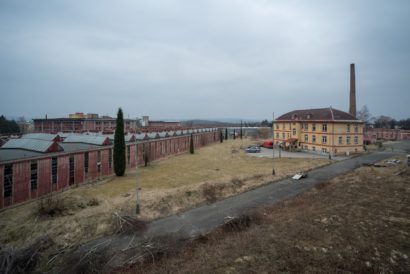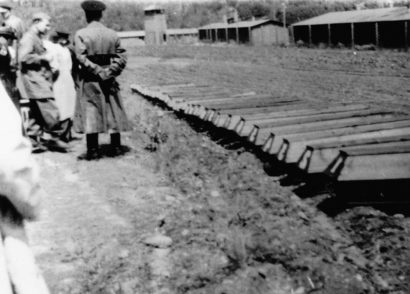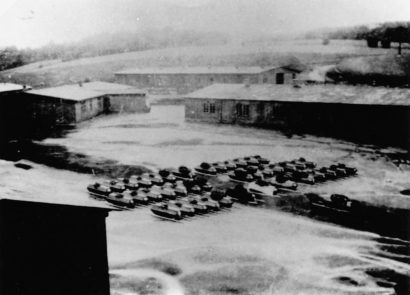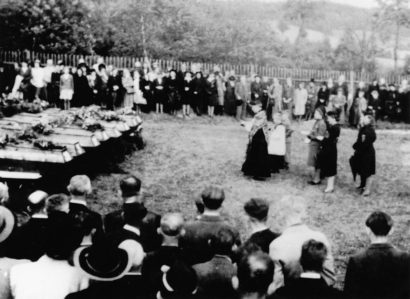Neurohlau (Nová Role) Subcamp
Men's camp: December 7, 1942 – April 29, 1945. Women's camp: January 1943 – April 29, 1945.
The women's camp was placed under the authority of the Flossenbürg concentration camp on September 1, 1944.
![]()
Porcelain factory in Neurohlau, 2018 (Flossenbürg Concentration Camp Memorial / Photo: Rainer Viertlböck)
![]()
Exhumation of the dead, June 8, 1945 (City Administration Nová Role). Under the supervision of an international commission, the dead were exhumed from a mass grave near the prisoner camp.
![]()
Laying out of the dead in the former prisoner camp, June 8, 1945 (City Administration Nová Role)
![]()
Burial ceremony at the Neurohlau Cemetery, June 9, 1945 (City Administration Nová Role)
-
Prisoners
Starting December 1942, mostly German and Polish men were transported to Neurohlau (at the end of 1944: 80 prisoners). From January to Fall 1943, 400 female prisoners arrived; in April 1945, 1,047 women were registered.
-
Over 300 women came from the Soviet Union, 270 from Poland, 130 from Germany, along with French, Slovenian and women from 12 other countries.
-
Forced labor and quarters
Behind the train station, the men erected a barracks compound. The female prisoners quartered there were forced to work for the SS-owned porcelain manufacturer “Bohemia”.
-
From January 1944 they produced electric distributors for Messerschmitt. In August 1944, 20 Polish and Russian prisoners had to build an equipment store for an SS duty station at the kaolin works in Poschetzau (Boží¥any), located two kilometers away. The conditions in Neurohlau dramatically worsened in the spring of 1945 as evacuation transports from other camps arrived.
-
Guards
23 SS men, 18 female overseers. In comparison to everyone else, the detail leader Hugo Buck and the head overseer Fritzsche were notorious for their brutal treatment of the prisoners. The director of “Bohemia”, Hechtfischer, was responsible for the desolate conditions.
-
Death toll
Due to the many transfers, no exact count is known. The registers noted eleven instances of death.
-
Disbanding of the camp / end of the war
In several transports, the camp was evacuated starting April 19. On May 7-8, the guards abandoned their duties near Laun (Louny) and Saaz (Zatec) and left the prisoners to fend for themselves.
-
Commemoration
A memorial stone and an information panel are located in front of the train station building; a monument at the local cemetery.



